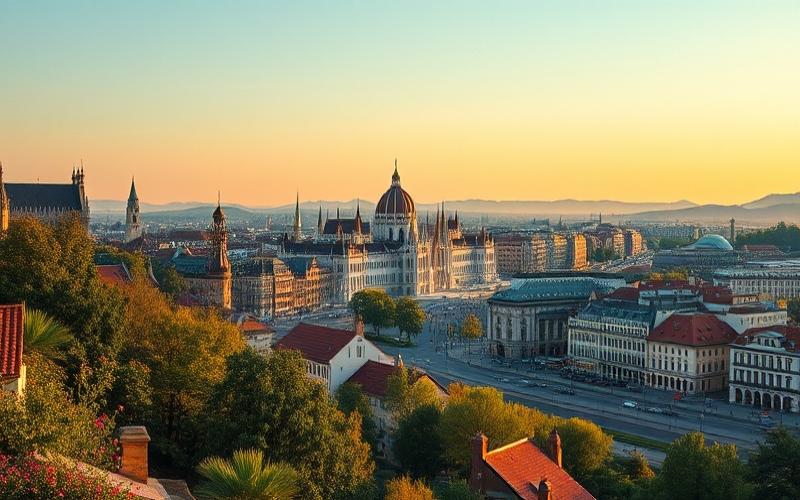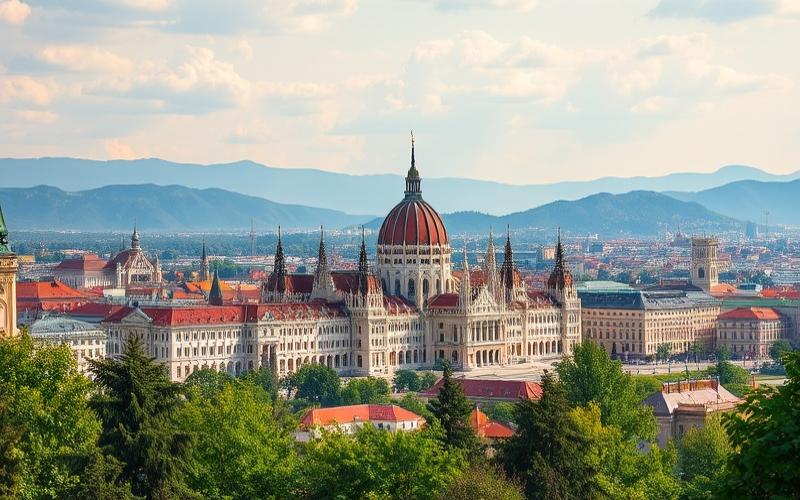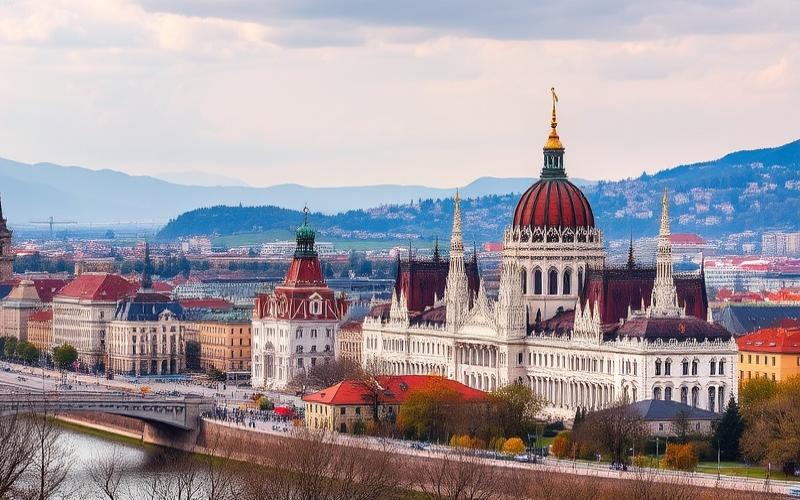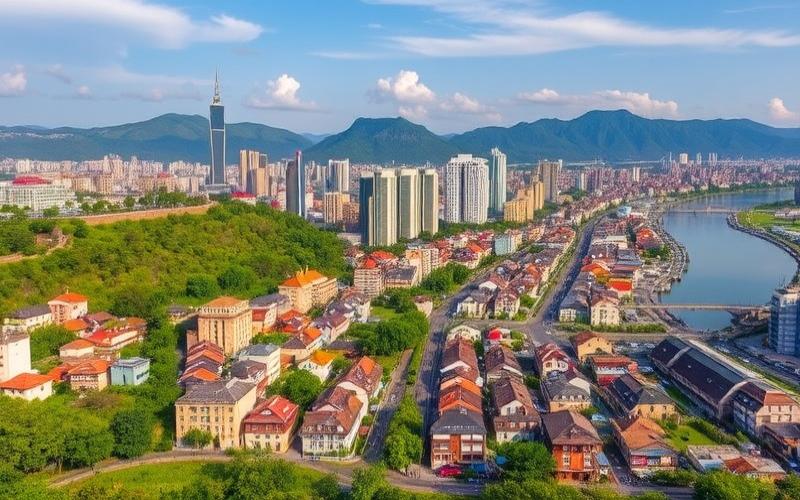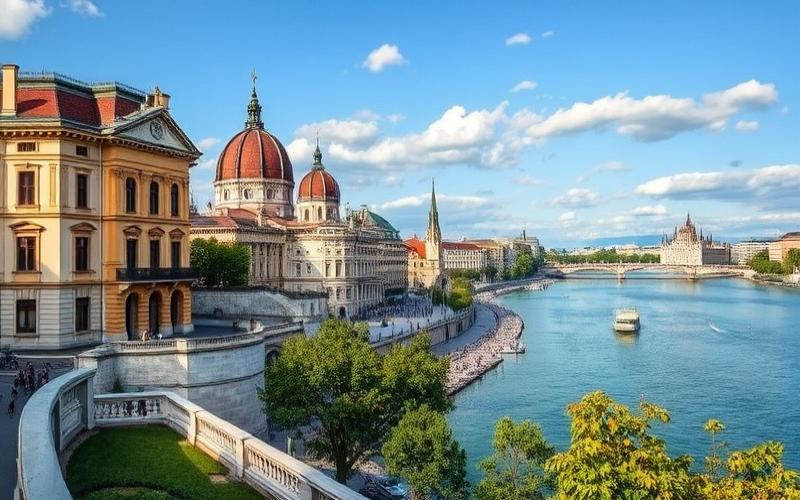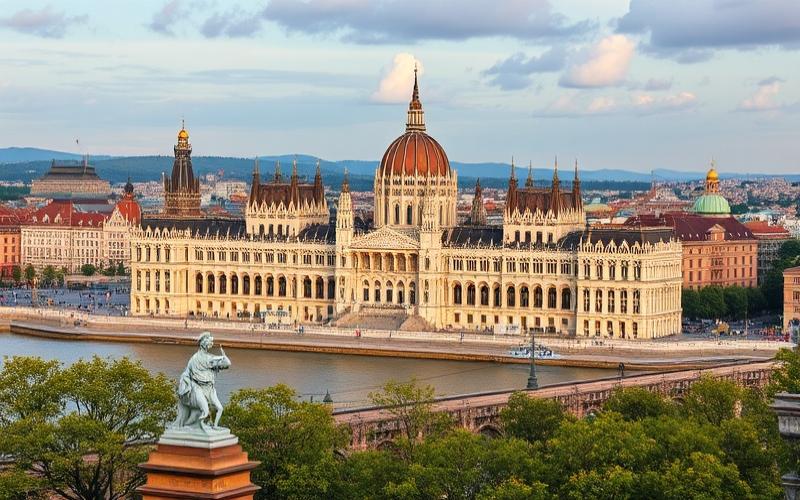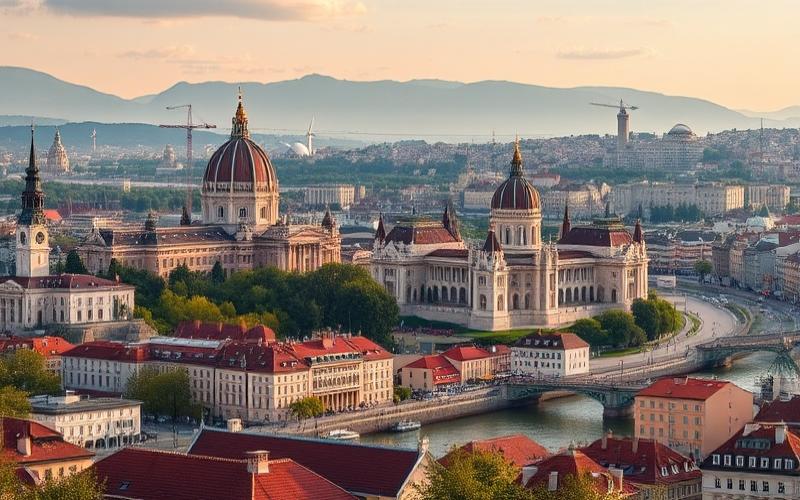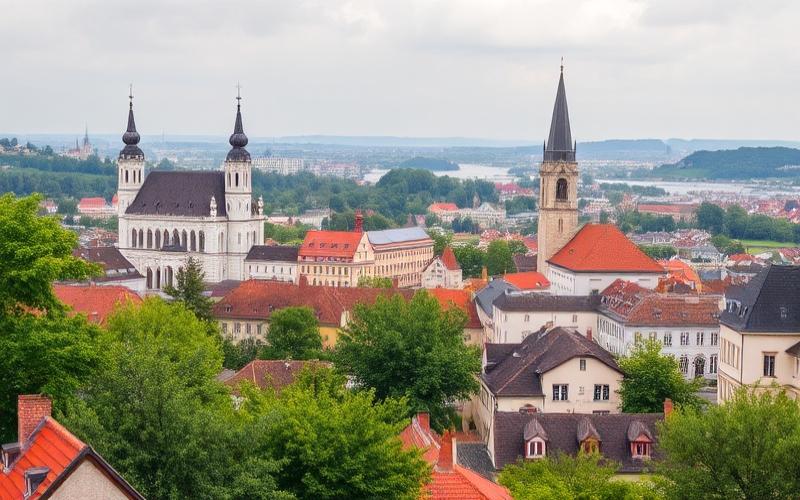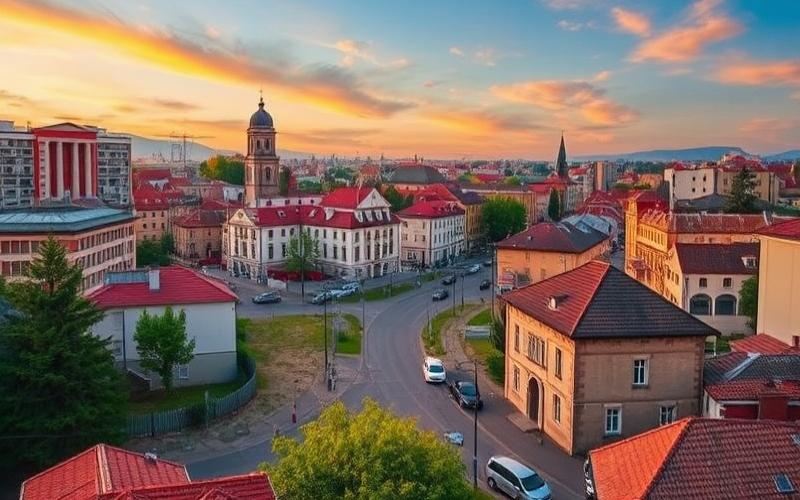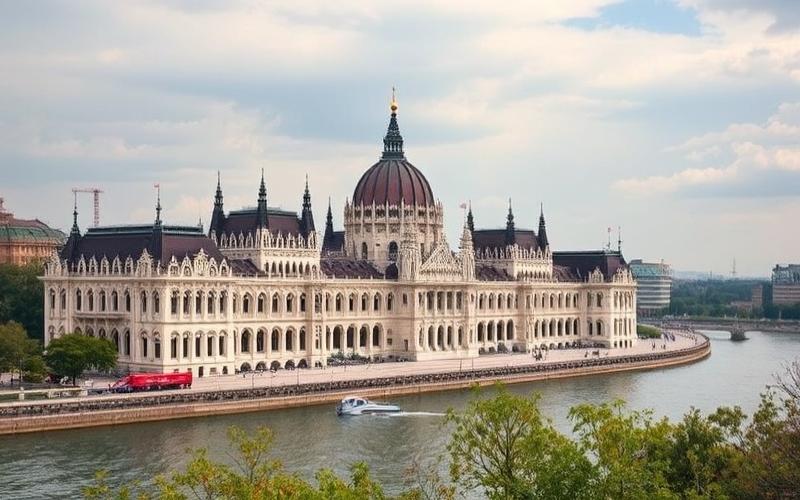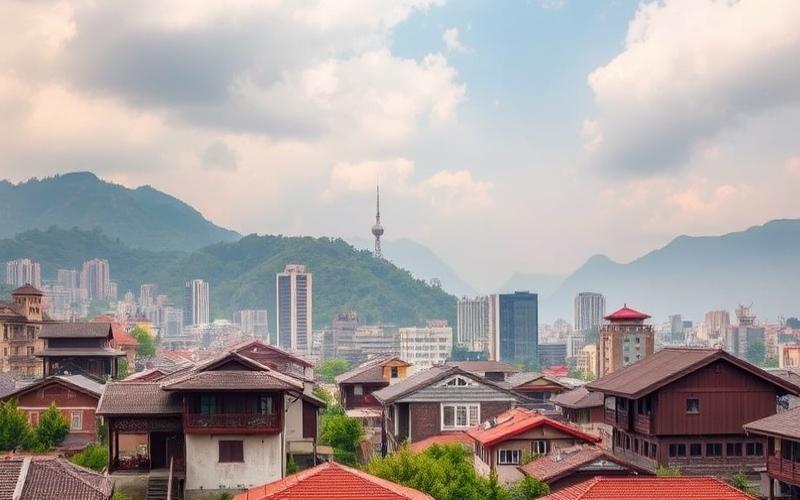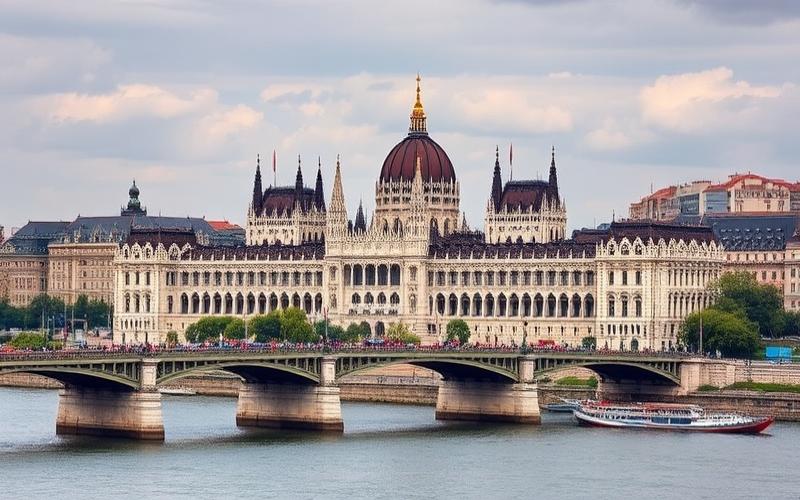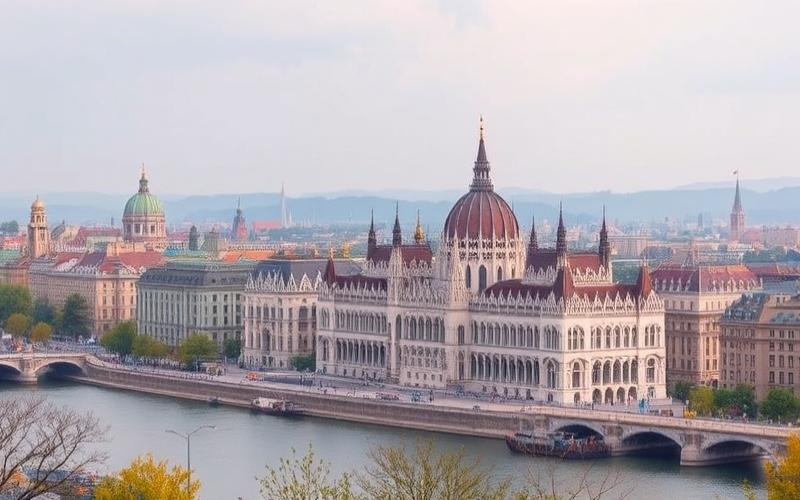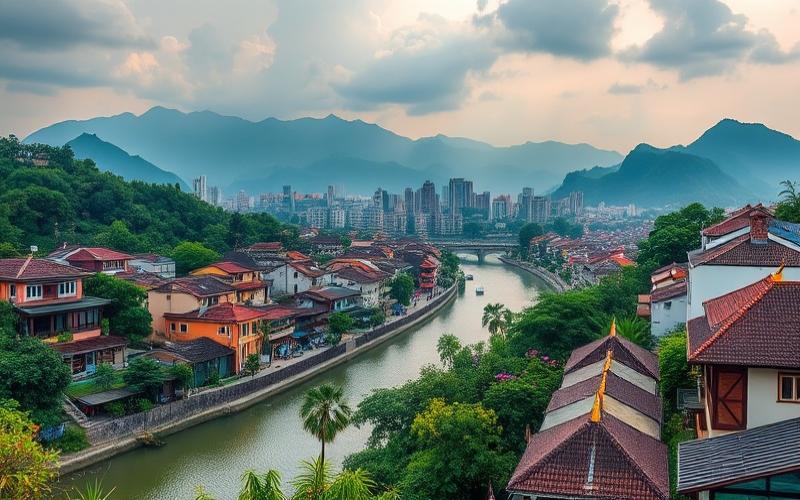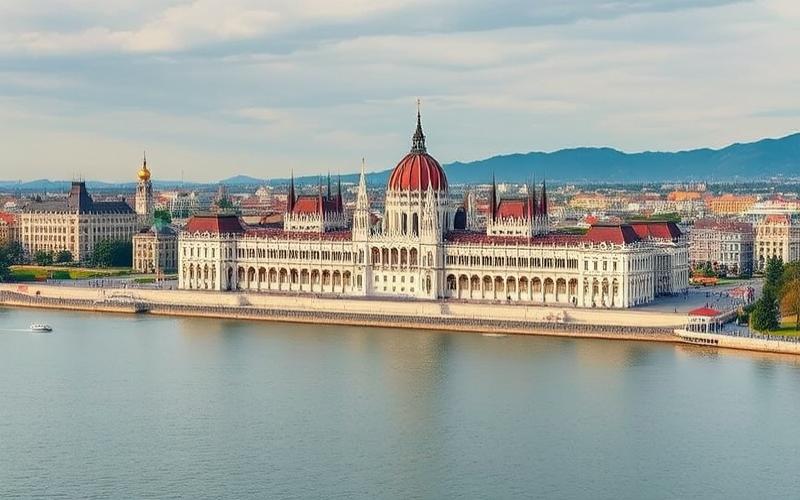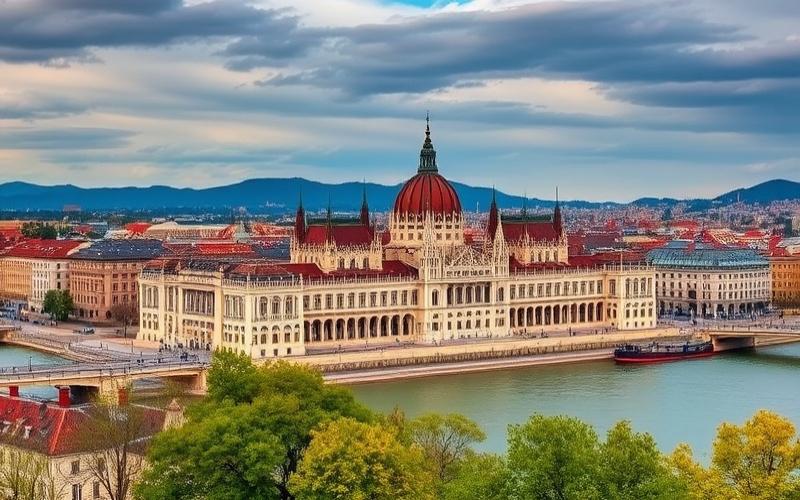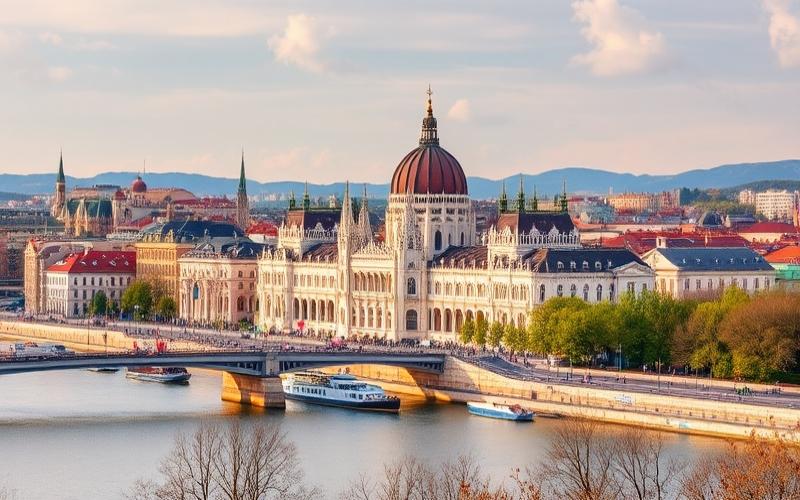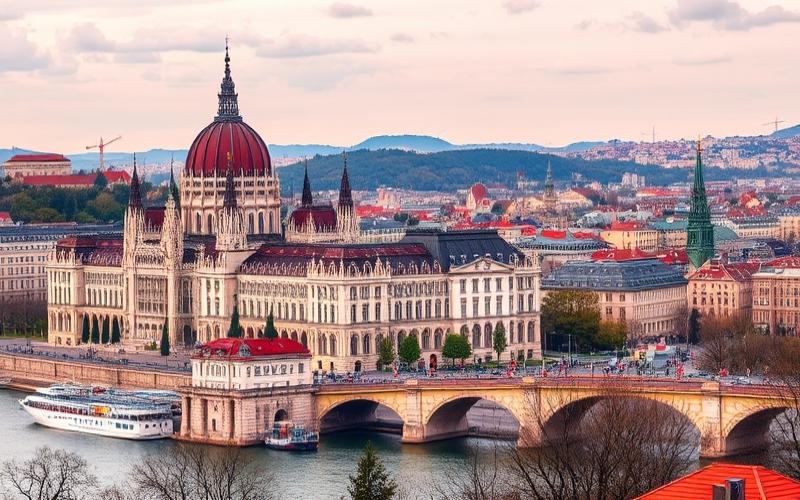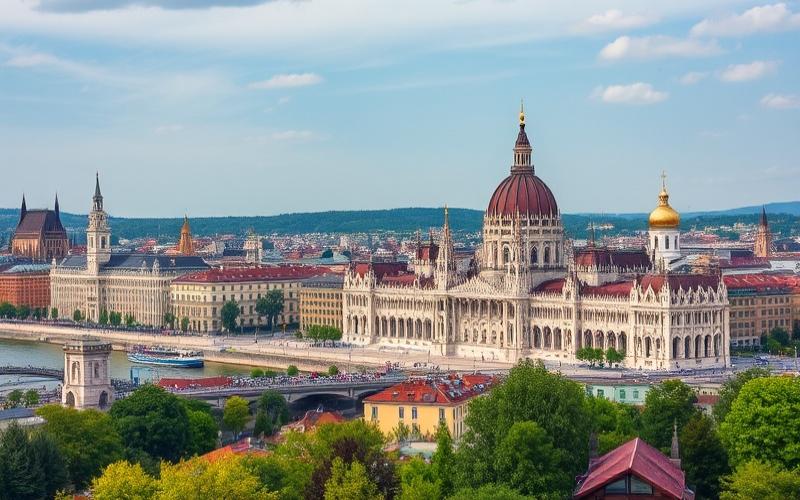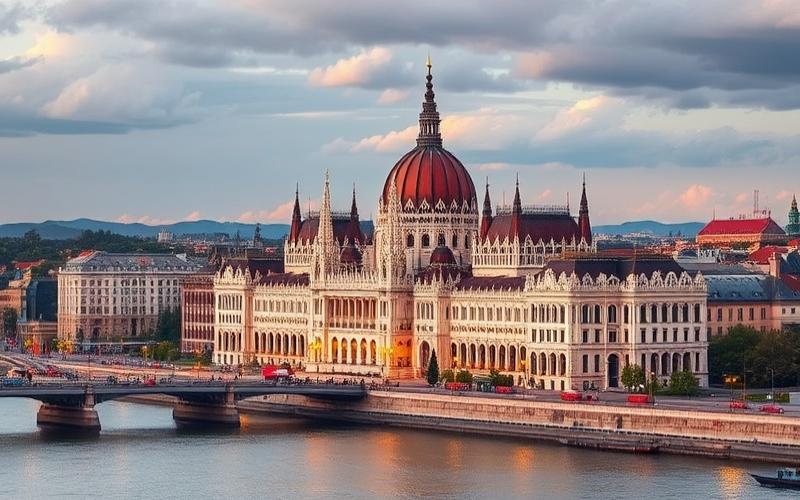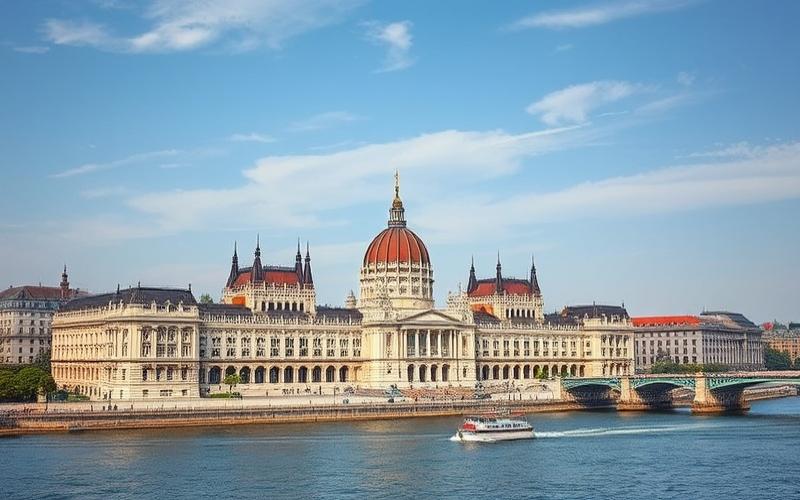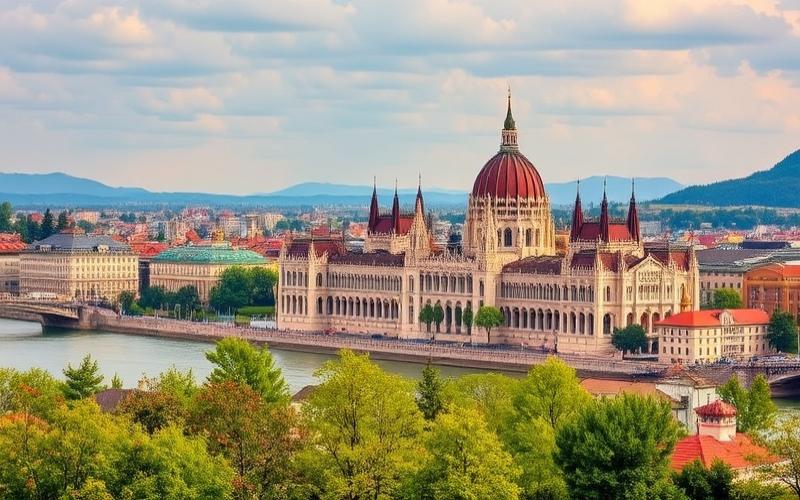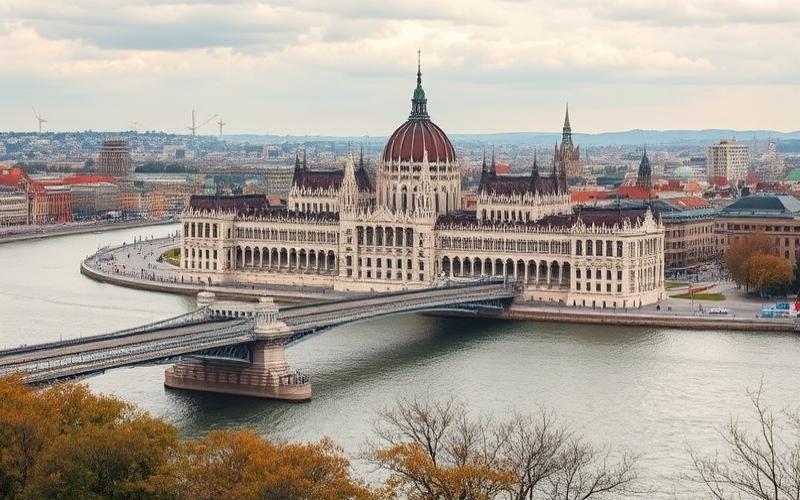
 Published on and written by Cyril Jarnias
Published on and written by Cyril Jarnias
At the Dawn of a New Decade: Hungary Faces Major Economic Shift
Hungary, rich in history and vibrant culture, is preparing for a major economic shift that brings both opportunities and challenges. While some lesser-known cities are beginning to attract investor attention, an alarming trend is emerging: real estate prices in these areas are projected to skyrocket by 2030.
These anticipated increases, driven by a combination of economic, demographic, and geopolitical factors, could radically transform the urban landscape and local socioeconomic dynamics.
Which Hungarian Cities Are Becoming Investment Hotspots?
In this article, discover which Hungarian cities are becoming investment hotspots and what implications this phenomenon could have for residents and the country’s economic structure.
Good to Know:
Real estate prices in Hungary could see significant increases by 2030, particularly in lesser-known but rapidly developing cities.
Long-Term Forecasts for Hungarian Real Estate
Analysis of Economic Trends and Influencing Factors
- Urbanization: Hungary continues its urbanization trend, with population and economic growth concentrated in major cities, particularly Budapest. This continues to support real estate demand in urban centers, especially for new housing and well-located apartments.
- Government Policies: Homeownership support policies, such as subsidized mortgages (CSOK), have promoted property acquisition, but their gradual reduction now limits their market impact, particularly in central districts where foreign investors are present.
- Interest Rates: After a sharp increase in 2022-2023 (mortgage rates above 10%), a gradual easing is being observed. Lower interest rates are reviving the credit market and supporting demand, though caution remains due to the unstable macroeconomic context.
Demographic Factors and Internal Migration
- Urban Population: Population growth in major cities, particularly Budapest, Debrecen, Szeged, and Győr, is driving housing demand, especially among young professionals and families seeking urban employment opportunities.
- Internal Migration: Migration flows are directed toward economic and university hubs, contributing to upward pressure on real estate prices in these areas.
| Demographic Factor | Impact on Urban Real Estate |
|---|---|
| Population Growth | Increased Housing Demand |
| Aging Population | Increased Demand for Adapted Housing |
| Internal Migration | Price Increases in Dynamic Cities |
Key Cities with High Potential by 2030
| City | 2030 Projections | Main Reasons |
|---|---|---|
| Budapest | Moderate to Sustained Price Increases | Economic Capital, International Appeal, New Projects |
| Debrecen | Accelerated Growth Expected | Industrial Development, Universities, Foreign Investment |
| Győr | Potential for Price Increases | Automotive Industry, Proximity to Vienna/Bratislava |
| Szeged | Growing Demand | University and Technology Center |
Budapest remains the main driver, but the economic diversification of Debrecen and Győr is also attracting investors and new residents.
Structural Challenges and Risks
- Land Availability: Scarcity of buildable land in urban centers leads to vertical densification and higher square meter prices, increasing pressure on homeownership.
- Regulatory Constraints: Permit acquisition delays, construction standard complexity, and local policy variability can hinder new housing supply.
- Environmental Concerns: Increased energy performance requirements and climate risk management (floods, heatwaves) impose additional costs on developers and may influence supply structure.
Opportunities and Strategies for Investors
- Target Transitioning Neighborhoods: Areas undergoing gentrification or near future transport corridors offer above-average appreciation potential.
- Geographic Diversification: Explore secondary cities (Debrecen, Győr, Szeged) to benefit from demographic growth and industrialization.
- Focus on New and Efficient Properties: New real estate meeting latest energy standards benefits from sustained demand and better long-term valuation.
- Anticipate Interest Rate Cycles: Leverage falling interest rates for moderate leverage investment while remaining attentive to macroeconomic volatility.
Good to Know:
Long-term forecasts for Hungarian real estate indicate several dynamics to monitor as the economy continues to grow; with increasing urbanization rates and favorable government policies, including tax incentive programs for buyers, these trends should boost the urban real estate market. Current relatively low interest rates make property purchases more accessible, while internal migration and urban population growth, particularly in Budapest and Debrecen, are increasing demand. However, constraints such as limited buildable land availability, especially in major cities, and regulatory restrictions could create challenges. Interesting investment opportunities persist, particularly in developing areas around Miskolc and Pécs, while strategies focused on early purchases in these growing markets could maximize returns.
Key Takeaways
The Hungarian real estate market is expected to remain favorable through 2030 in major cities, driven by urbanization, credit recovery, and urban population growth. Savvy investors will prioritize developing sectors and properties meeting new environmental expectations while integrating regulatory and land risk management.
Promising Cities for Smart Investment
Szeged, Debrecen and Budapest are the three Hungarian cities currently showing the strongest potential for real estate price increases by 2030.
| City | Major Growth Factors | Infrastructure Projects | Sectors to Watch |
| Szeged | BYD factory, investor influx, rapid demand increase (+66% in one year) | Upcoming BYD site construction (electric vehicles), modernization of road and rail routes to Serbia and Romania | Neighborhoods near future industrial site, downtown student areas |
| Debrecen | BMW factory, major industrial development, growing appeal for foreign companies | Extension of high-speed rail network to Budapest; new industrial parks | Residential areas around industrial zones and technology parks |
| Budapest | Stable or slightly increasing demographic dynamics in some districts; continuous commercial real estate investments | Public transport renovation (metro M3/4), Váci Corner/Budapest XIII urban projects | XIII District (Váci út), IX District (Ferencváros), student neighborhoods |
Main Urban Developments and Planned Infrastructure:
- Szeged:
- BYD factory construction will attract national and international skilled workforce. Immediate increases in rental demand and square meter prices are anticipated.
- Logistics development related to this factory will have a multiplier effect on both residential and commercial markets.
- Debrecen:
- BMW’s announced installation comes with massive investments in roads, international schools, and local hospitals.
- Residential neighborhoods near new industrial zones are particularly attractive for investors anticipating massive arrival of qualified employees.
- Budapest:
- Although already mature in terms of real estate valuation, some peripheral but well-connected districts continue transforming with foreign student arrivals or urban renewal.
Socioeconomic Factors Favoring These Cities Over Other Hungarian Locations:
- Positive or stabilized demographic dynamism while many small towns elsewhere in Hungary experience marked rural exodus;
- Local policies favorable to foreign investors through temporary tax relief or administrative facilitation;
- Higher average salaries than provincial areas due to massive international company presence;
- Strong university offerings (particularly Szeged & Debrecen) generating sustained student rental demand.
Comparison with Other Hungarian Locations:
Most rural regions experience demographic stagnation or net decline. Public investments there are lower compared to the cited major urban areas. This dynamic directly reflects on real estate prices, which show weak growth or stagnation outside major strategic corridors.
For any investor targeting long-term wealth growth, prioritize:
- Neighborhoods adjacent to new industrial hubs,
- Student rental sector in university cities,
- Areas directly benefiting from major rail/road network improvements.
The combination of pro-business local policies, regional economic dynamism enhanced by recently established multinationals, and positive or even explosive anticipated infrastructure evolution clearly tips the balance toward Szeged then Debrecen—even ahead of Budapest in certain specific niches.
Good to Know:
Among Hungarian cities showing strong potential for real estate price increases by 2030, Szeged, Debrecen and Győr stand out thanks to their major urban development and infrastructure projects. In Szeged, tram line expansion and new university district development should stimulate the real estate sector. Debrecen, by hosting the new University of Debrecen campus and a technology park, sees increased economic activity, thus attracting investors. In Győr, industrial zone development and transport network improvements make the downtown area particularly attractive for investment. These projects, coupled with local policies encouraging urban renewal and growing population, create a favorable environment for price increases, surpassing other more stable Hungarian cities like Pécs.
Exploring Growth Areas by 2030
Budapest, Debrecen, Szeged and Győr are the main Hungarian urban areas where significant growth is projected by 2030. This dynamic is supported by several economic, demographic, and infrastructure factors.
Growth Factors in Urban Regions:
- Budapest
- Infrastructure modernization (transport, public spaces).
- Major projects such as Rákosrendező district redevelopment with construction of thousands of modern apartments.
- Appeal to young professionals and international investors due to improved quality of life.
- Debrecen
- Industrial expansion (particularly automotive and technology).
- Significant foreign investments (BMW factories).
- Szeged & Győr
- Development of university and technology hubs.
- Good connectivity with national highway network.
Comparative Table of Regional Drivers
| City | Economic Drivers | Infrastructure Projects | Demographic Outlook |
|---|---|---|---|
| Budapest | Services, Finance, Tech | New Districts, Modernization | Moderate Growth |
| Debrecen | Automotive Industry | BMW Factories | Strong Appeal |
| Szeged | Universities | Technology Park | Stability |
| Győr | Automotive | Audi Factories | Active Youth |
Real Estate Demand and Investments:
- Anticipated increase in real estate demand across all these urban areas due to:
- Continued rural exodus to cities.
- Growing numbers of students and young professionals.
- Urban projects generating diversified supply (new housing vs historical renovations).
- Rental yields should remain attractive particularly in Budapest where rental demand is strong among expatriates and students.
List of Major Current or Planned Projects:
- Industrial site rehabilitation in Budapest.
- Mass construction of affordable apartments in Rákosrendező.
- Debrecen industrial park expansion to accommodate BMW.
- Sustainable public transport development in all these cities.
Influential Government Policies:
- Encouragement of foreign investment through targeted tax relief in specific industrial sectors or strategic geographic zones.
- Support for affordable housing to limit excessive price increases despite rapidly growing demand.
Regional Real Estate Forecasts According to Experts:
Expected Evolution Through 2030
- Budapest: Estimated average annual increase between +4% and +7%, stabilized by new supply but pulled upward in some renovated neighborhoods.
- Debrecen: Potential progression exceeding +6% annually thanks to major industrial projects.
- Szeged & Győr: Moderate increases (+3%/+5%) mainly driven by student/young professional market.
Key Statistical Data
- Total Hungary Population (2020): 9,584,627 inhabitants
- National Unemployment Rate (2022): 4.2%
- Hungary Annual Nominal GDP (2022): $197.8 billion USD, growth +7%
- Increasing urban density (+103 inhabitants/km²), accentuated around main metropolitan areas
Well-connected areas offering modern environments will therefore experience sustained but controlled real estate price increases thanks to public policies aiming for balance between regional economic dynamism and residential accessibility for all.
Good to Know:
By 2030, Budapest, Debrecen and Szeged are major areas in Hungary where strong growth is expected, due to increasing urban population and significant infrastructure investments. Budapest, as the country’s economic center, attracts ambitious urban development projects, such as construction of the new business district in Gazdagrét. In Debrecen, new automotive factory openings are stimulating real estate demand, while Szeged benefits from government initiatives promoting innovation and research. The Hungarian government encourages these urban growth patterns through favorable tax policies for investors and subsidies for new construction. Experts project real estate price increases potentially reaching 30% in these areas, supported by increased need for modern, well-located housing. According to latest data, Budapest real estate prices have already seen a 15% increase over the past two years, which could serve as an indicator for future trends.
Disclaimer: The information provided on this website is for informational purposes only and does not constitute financial, legal, or professional advice. We encourage you to consult qualified experts before making any investment, real estate, or expatriation decisions. Although we strive to maintain up-to-date and accurate information, we do not guarantee the completeness, accuracy, or timeliness of the proposed content. As investment and expatriation involve risks, we disclaim any liability for potential losses or damages arising from the use of this site. Your use of this site confirms your acceptance of these terms and your understanding of the associated risks.


